Weston Wood
Joseph Had a Little Overcoat
Create a cross-curricular learning experience based on the children's book Joseph Had a Little Overcoat with this collection of learning activities. Starting with a class reading of the story, children go on to learn about the sequence...
Polk Bros Foundation
I Can Infer the Main Idea When I Read
While reading any text, ask your pupils to keep this graphic organizer on hand. They can note down the main idea and three supporting details during or after reading. The instructions allow for individuals to use words or images to...
Polk Bros Foundation
Show, Then Write What You Learn
After reading a text or covering a new topic, have class members fill out the four boxes on this page with facts. Individuals can use words or drawings to represent the facts.
Polk Bros Foundation
Picture the Main Idea
Invite your learners to represent the central idea of a text visually. Individuals note down the main idea and then have the opportunity to draw four pictures that show the idea. Consider working out the main idea together and then...
Orange County Schools
Piggybook
Summarizing text is a balancing act between being brief but thorough. You need to be short and to the point, but also cover all the important details, a task that presents a challenge for many young learners. In this lesson based on the...
Learning to Give
Humphrey The Lost Whale
The children's book Humphrey the Lost Whale tells an amazing tale of a community joining together for a common cause. Read this book with your class, making connections between the events in the story and personal experiences of young...
Curated OER
No Foot, No Horse
Why do horses wear shoes? Why do people wear shoes? Using worksheets, which are embedded in the plan, learners write descriptive paragraphs about their own shoes, classify a pile of shoes, and also engage in math games about the variety...
K12 Reader
Forms of Matter
In this forms of matter worksheet, students read a 4 paragraph article about forms of matter, then complete a set of 5 short answer comprehension questions.
Curated OER
Pizza for Everyone
Pizza is the inspiration for the cross-curricular instructional activity detailed here. Start out with a poem about pizza and move into a discussion about balanced eating. To close the language arts portion of the instructional activity,...
Curated OER
Oklahoma Stone Soup
Class members complete activities related to the story "Oklahoma Stone Soup." First, pupils read, discuss, and answer questions about the story. Next, to incorporate math into the lesson, learners make stone soup using a variety of...
Curated OER
Rising and Falling Actions
Rising and falling actions are big parts of how a plot moves through the course of a story, narrative, or novel. Youngsters use examples from their texts as they examine where the action rises and falls in the book, How My Parents...
Curated OER
Plot with More Than One Problem
Every good story has a plot, and every good plot contains a conflict or problem. Third graders familiarize themselves and identify how problems in a story are connected. First as a class and then in small groups or individually, learners...
Curated OER
A Story of Philanthropy
Help your class define philanthropy and recognize philanthropic activities. Ask them to identify examples of philanthropy in literature and explore the philanthropic deeds of themselves and others. To wrap up, create a class display with...
Curated OER
Little Red Hen
Pupils listen to a teacher reading of The Little Red Hen, identify the story elements and sequence them. They talk about different jobs associated with providing food and act out a play based on the story. Be aware that although several...
Alabama Learning Exchange
Look at me!
Third graders write an autobiography and use pictures of themselves from past and present to illustrate it. They take pictures with a digital camera, scan pictures, and add them to a document.
John F. Kennedy Center
The Kennedy Center: Masks and Aesop's Fables
This multi-media visual and language arts lesson plan offers intellectual, creative, and interpretive opportunities through use of books, music, and the internet. It offers complete grade-leveled lesson plans for grades k-4 which include...
National Endowment for the Humanities
Neh: Edsit Ement: Animal Fables and Trickster Tales
Animals and tricksters appear in folk tales from a wide variety of cultures, especially those with strong oral storytelling traditions. Use this lesson plan to introduce students to these characters and the lessons they were used to...
Georgia Department of Education
Ga Virtual Learning: Fable [Pdf]
This is a one-page PDF of a poster or flyer listing the characteristics of a fable. It could be printed and hung in the classroom.
Georgia Department of Education
Ga Virtual Learning: Fable Chart [Pdf]
This is a PDF Fable Chart designed for students to complete as they read a fable; it includes the title and author, the animal character, human characteristics, the individual elements of a short story, and the moral or lesson.
Scholastic
Scholastic: Myths, Folktales, and Fairy Tales: Discovering Fairy Tales
Discover similarities in fairy tales around the world. Teacher's Guide link offers additional online resources, graphic organizers, related reading list, lessons and evaluations. Publish a fairy tale online.
University of Massachusetts
University of Massachusetts, Amherst: Aesop's Fables
Work your way through the moral tales of Aesop. Table of context provides links to traditional tellings and modernized versions. Videos and original illustrations help tell the stories.
Other
Aesop's Fables: Online Collection
In addition to providing full texts of over 600 fables by various authors, this website is a complete source for biographical, historical, and critical information. Many fables include Real Audio narrations so you can listen while you...
ReadWriteThink
Read Write Think: Exploring World Cultures Through Folk Tales
Using international folklore as subject matter, lead your students in a unit to research literary forms and foreign countries. There is a printout available for instruction and assessment.
ReadWriteThink
Read Write Think: Once Upon a Time Rethought Writing Fractured Fairy Tales
Contains plans for five lessons that teach about fairy tales and literary elements by having students write their own fractured fairy tales. In addition to objectives and standards, this instructional plan contains links to sites used in...









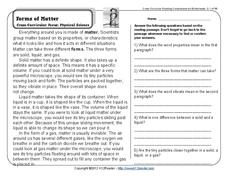
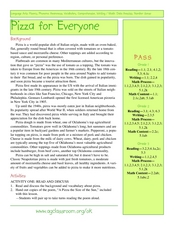


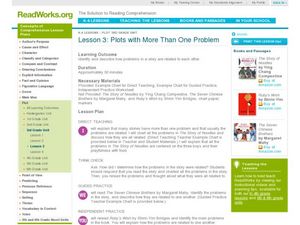

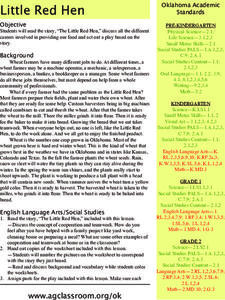
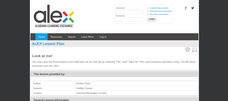

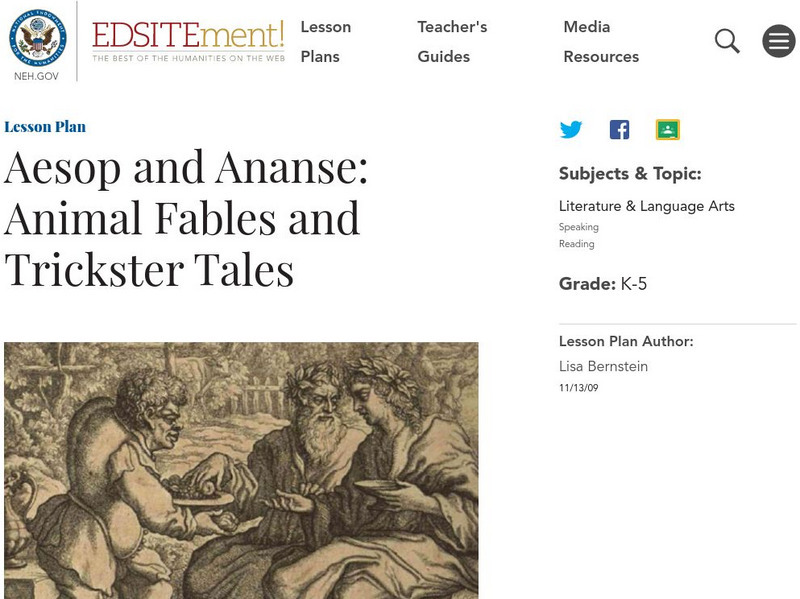
![Ga Virtual Learning: Fable [Pdf] Graphic Ga Virtual Learning: Fable [Pdf] Graphic](https://d15y2dacu3jp90.cloudfront.net/images/attachment_defaults/resource/large/FPO-knovation.png)




